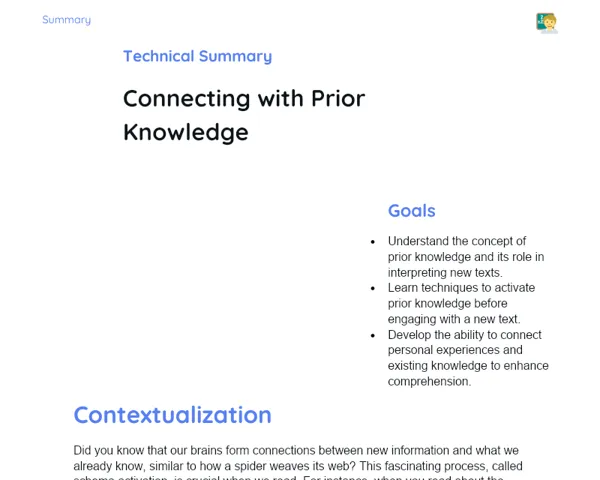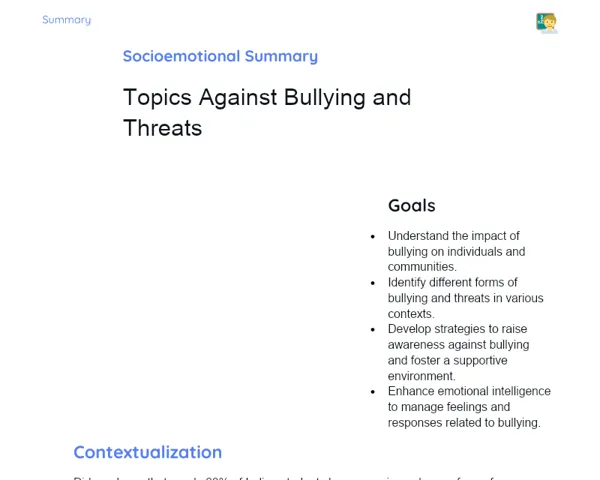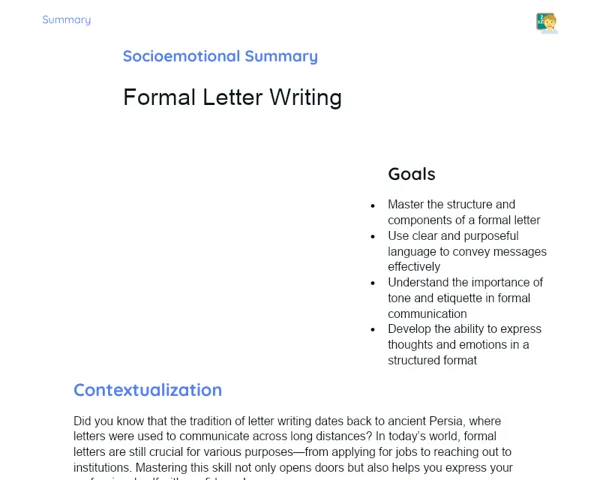Twist Your Tongue, Tickle Your Mind!
Goals
1. Learn the art of pronunciation through fun tongue-twisters!
2. Enhance your tongue agility, which is essential for speaking clearly.
3. Boost your confidence in speaking English by mastering these rhythmic phrases.
Contextualization
Did you know that tongue twisters have been used for centuries as a fun way to improve speaking skills? In ancient India, poets would practice tricky sounds to ensure their verses flowed beautifully. Today, we continue this tradition not just for poets, but for everyone who wants to express themselves clearly and confidently!
Exercising Your Knowledge
Tongue Agility
Tongue agility refers to the ability of your tongue to move quickly and accurately, which is essential for clear pronunciation. Just as a dancer must train their body to perform precise movements, your tongue needs practice to articulate sounds well. Tongue twisters are a fun way to engage with this training, allowing you to exercise your speech muscles while enjoying the rhythm and playfulness of language. By enhancing your tongue agility, you not only improve your pronunciation but also build your confidence, allowing you to express yourself more freely and effectively in various social situations.
-
Tongue twisters are designed to challenge the tongue's movement, making them perfect for practice.
-
Regular practice helps to increase coordination and speed, leading to clearer speech.
-
Improved tongue agility can boost your self-esteem, making you more comfortable when speaking in public or with friends.
Rhythm and Flow
When you pronounce tongue twisters, you are also learning about rhythm and flow in language. Just like music, spoken language has a rhythm that can make communication more engaging. As you practice these tongue-twisting tunes, you will become more aware of syllable patterns, pauses, and intonation, all of which contribute to effective communication. Understanding rhythm helps you not only with pronunciation but also in creating a connection with your audience, making your speech more captivating, just like a well-sung song!
-
Rhythm in speaking can create interest and hold the listener's attention.
-
Practicing with rhythm helps to internalize language patterns, improving fluency.
-
Connecting speech to musicality can make learning more enjoyable and memorable.
Creativity and Playfulness
Engaging with tongue twisters allows you to embrace creativity and playfulness in language learning. These phrases often incorporate humor and absurdity, which can lighten the mood in the classroom and make learning more enjoyable. By using tongue twisters, you're not just memorizing sentences; you are playing with sounds, which enhances your ability to express yourself in unique and interesting ways. This creative approach helps develop emotional intelligence by promoting a positive attitude towards learning and fostering a spirit of exploration in the social context.
-
Playful learning helps reduce anxiety related to making mistakes when speaking.
-
Creativity in language can aid in problem-solving and thinking outside the box.
-
When you have fun with language, you are more likely to retain what you've learned.
Key Terms
-
Tongue Agility: The speed and accuracy with which your tongue can articulate speech sounds.
-
Pronunciation: The way in which a word is pronounced, which can affect clarity and understanding in communication.
-
Rhythm: The pattern of sounds in speech that creates flow and musicality, enhancing listener engagement.
For Reflection
-
How does practicing tongue twisters make you feel? Do you notice changes in your confidence when speaking? Reflect on these feelings.
-
Think about a time when you struggled to pronounce something in English. How did that make you feel socially? What could you do differently next time?
-
Tongue twisters are fun! How can you create your own tongue twisters using words that are meaningful to you or your culture? Share your creations!
Important Conclusions
-
Tongue twisters are not just silly phrases; they are tools for enhancing pronunciation and tongue agility.
-
Practicing tongue twisters fosters confidence and creativity, allowing you to express yourself in more engaging ways.
-
The rhythm and flow you learn from tongue twisters can transform your communication skills, making conversations delightful for both you and your listeners.
Impacts on Society
In our diverse society, clear communication is the key to understanding one another, especially as we interact in a multilingual environment. Mastering pronunciation through tongue twisters empowers you, as students in India, to articulate your thoughts clearly and connect with friends and family across various cultural backgrounds. This not only reinforces your identity but also fosters respect and appreciation for each other’s languages and dialects.
Moreover, as you practice these tongue-twisting tunes, you are also building emotional connections. When you pronounce words confidently, you’re more likely to engage in social activities, share your ideas, and express your feelings! This opens up avenues for you to form stronger bonds with peers, transforming the classroom and community into a vibrant space filled with creativity and laughter.
Dealing with Emotions
This week, take a moment each day to recognize what you feel when you practice your tongue twisters. Are you excited? Anxious? Proud? Start by jotting down these feelings in a journal. Label them accurately. Once you understand your emotions, express them creatively—perhaps by sharing your favorite tongue twister with someone at home or even making a little rhyme of your own! Finally, try regulating your emotions by practicing calming techniques, like deep breathing or saying positive affirmations. Remember, in every twist and turn of language, emotional awareness makes you a better communicator!
Study Tips
-
Practice tongue twisters daily, starting slow and gradually increasing your speed for better tongue agility!
-
Record yourself while practicing; listening to your pronunciation can help you identify areas for improvement.
-
Collaborate with friends to create fun tongue twisters that represent your unique experiences or cultural stories!



